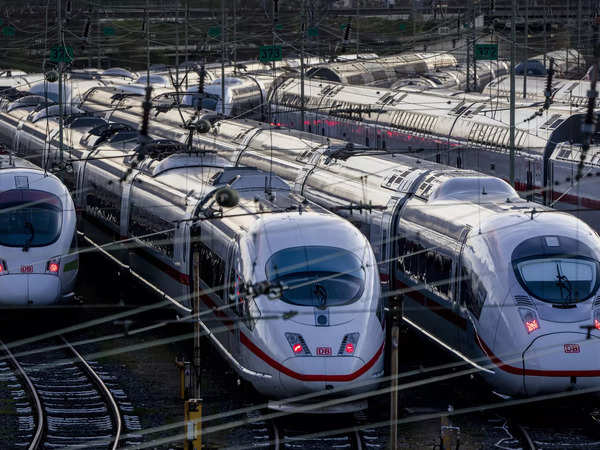- Joined
- Apr 29, 2015
- Messages
- 18,295
- Likes
- 56,287
Hyderabad may get bullet train connectivity with Mumbai and Bengaluru

The seven identified rail networks in the high-speed rail corridor contain vital routes, such as Delhi-Varanasi, Delhi-Ahmedabad, Delhi-Amritsar, Mumbai-Nagpur, Chennai-Mysuru, and Varanasi-Howrah.
Synopsis
Hyderabad has been identified among seven potential routes for bullet train connectivity, as proposed in India's National Rail Plan. The plan aims to develop a high-speed rail network between Mumbai and Hyderabad spanning 709 km. The survey also projected that Hyderabad may get bullet train connectivity to Bengaluru by 2041.

The seven identified rail networks in the high-speed rail corridor contain vital routes, such as Delhi-Varanasi, Delhi-Ahmedabad, Delhi-Amritsar, Mumbai-Nagpur, Chennai-Mysuru, and Varanasi-Howrah.
Synopsis
Hyderabad has been identified among seven potential routes for bullet train connectivity, as proposed in India's National Rail Plan. The plan aims to develop a high-speed rail network between Mumbai and Hyderabad spanning 709 km. The survey also projected that Hyderabad may get bullet train connectivity to Bengaluru by 2041.
Hyderabad may get a bullet train connectivity with Mumbai and Bengaluru. Union railway minister Ashwini Vaishnaw, in a written reply to the Lok Sabha, revealed that the National Rail Plan (NRP) outlines seven potential routes, including Mumbai-Hyderabad, for the development of the High-speed rail network.
As per a ToI report, the NRP envisions a bullet train network spanning 709 km between Mumbai and Hyderabad. The report said that the preliminary preparations are already underway to assess the feasibility of the ambitious project, slated for completion by 2051.
"The proposal aims to establish a robust network between these prominent commercial cities, taking into account the anticipated future demand for seamless connectivity between the two states. The feasibility study will encompass various aspects, including soil testing, property and land acquisition requirements, culminating in the preparation of a Detailed Project Report (DPR)," ToI quoted an official.
As per the high-speed rail master plan in the NRP, Hyderabad is also projected to gain bullet train connectivity to Bengaluru by 2041, while a network connecting Chennai to Bengaluru via Mysuru is under consideration for 2051.
In addition to this initiative, the government is currently undertaking the Mumbai-Ahmedabad High-Speed Rail project in collaboration with technical expertise and financial support from the government of Japan.
The seven identified rail networks in the high-speed rail corridor contain vital routes, such as Delhi-Varanasi, Delhi-Ahmedabad, Delhi-Amritsar, Mumbai-Nagpur, Chennai-Mysuru, and Varanasi-Howrah. The development of high-speed rail corridors promises to revolutionize travel in the country, ushering in a new era of rapid and efficient transportation.






